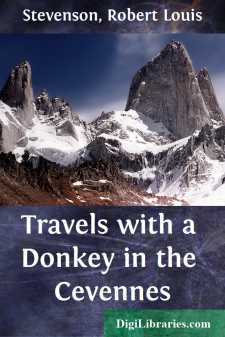Categories
- Antiques & Collectibles 13
- Architecture 36
- Art 48
- Bibles 22
- Biography & Autobiography 813
- Body, Mind & Spirit 142
- Business & Economics 28
- Children's Books 17
- Children's Fiction 14
- Computers 4
- Cooking 94
- Crafts & Hobbies 4
- Drama 346
- Education 46
- Family & Relationships 57
- Fiction 11829
- Games 19
- Gardening 17
- Health & Fitness 34
- History 1377
- House & Home 1
- Humor 147
- Juvenile Fiction 1873
- Juvenile Nonfiction 202
- Language Arts & Disciplines 88
- Law 16
- Literary Collections 686
- Literary Criticism 179
- Mathematics 13
- Medical 41
- Music 40
- Nature 179
- Non-Classifiable 1768
- Performing Arts 7
- Periodicals 1453
- Philosophy 64
- Photography 2
- Poetry 896
- Political Science 203
- Psychology 42
- Reference 154
- Religion 513
- Science 126
- Self-Help 84
- Social Science 81
- Sports & Recreation 34
- Study Aids 3
- Technology & Engineering 59
- Transportation 23
- Travel 463
- True Crime 29
Studies of American Fungi. Mushrooms, Edible, Poisonous, etc.
Description:
Excerpt
INTRODUCTION.
Since the issue of my "Studies and Illustrations of Mushrooms," as Bulletins 138 and 168 of the Cornell University Agricultural Experiment Station, there have been so many inquiries for them and for literature dealing with a larger number of species, it seemed desirable to publish in book form a selection from the number of illustrations of these plants which I have accumulated during the past six or seven years. The selection has been made of those species representing the more important genera, and also for the purpose of illustrating, as far as possible, all the genera of agarics found in the United States. This has been accomplished except in a few cases of the more unimportant ones. There have been added, also, illustrative genera and species of all the other orders of the higher fungi, in which are included many of the edible forms.
The photographs have been made with great care after considerable experience in determining the best means for reproducing individual, specific, and generic characters, so important and difficult to preserve in these plants, and so impossible in many cases to accurately portray by former methods of illustration.
One is often asked the question: "How do you tell the mushrooms from the toadstools?" This implies that mushrooms are edible and that toadstools are poisonous, and this belief is very widespread in the public mind. The fact is that many of the toadstools are edible, the common belief that all of them are poisonous being due to unfamiliarity with the plants or their characteristics.
Some apply the term mushroom to a single species, the one in cultivation, and which grows also in fields (Agaricus campestris), and call all others toadstools. It is becoming customary with some students to apply the term mushroom to the entire group of higher fungi to which the mushroom belongs (Basidiomycetes), and toadstool is regarded as a synonymous term, since there is, strictly speaking, no distinction between a mushroom and a toadstool. There are, then, edible and poisonous mushrooms, or edible and poisonous toadstools, as one chooses to employ the word.
A more pertinent question to ask is how to distinguish the edible from the poisonous mushrooms. There is no single test or criterion, like the "silver spoon" test, or the criterion of a scaly cap, or the presence of a "poison cup" or "death cup," which will serve in all cases to distinguish the edible from the poisonous. Two plants may possess identical characters in this respect, i. e., each may have the "death cup," and one is edible while the other is poisonous, as in Amanita cæsarea, edible, and A. phalloides, poisonous. There are additional characters, however, in these two plants which show that the two differ, and we recognize them as two different species.
To know several different kinds of edible mushrooms, which occur in greater or less quantity through the different seasons, would enable those interested in these plants to provide a palatable food at the expense only of the time required to collect them....












